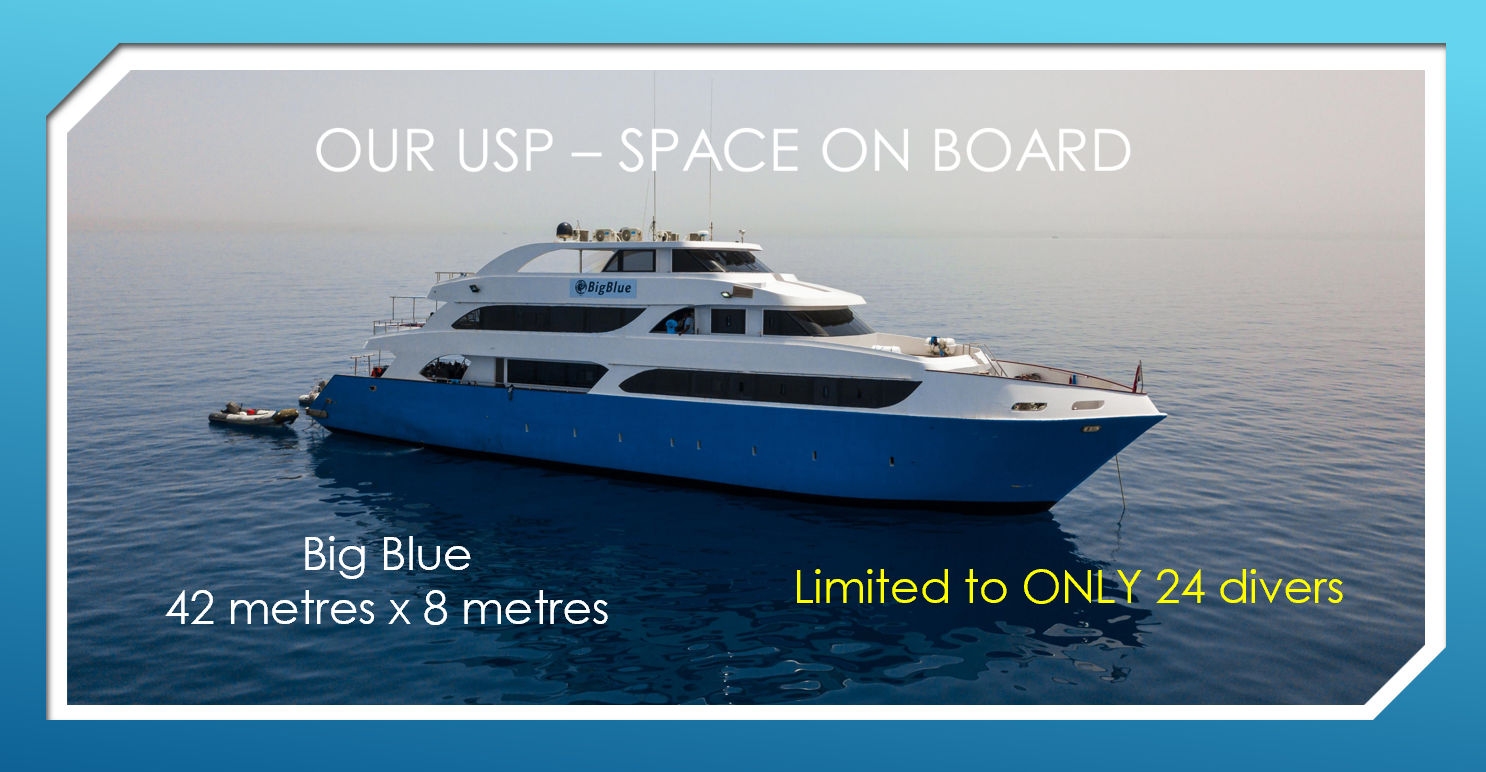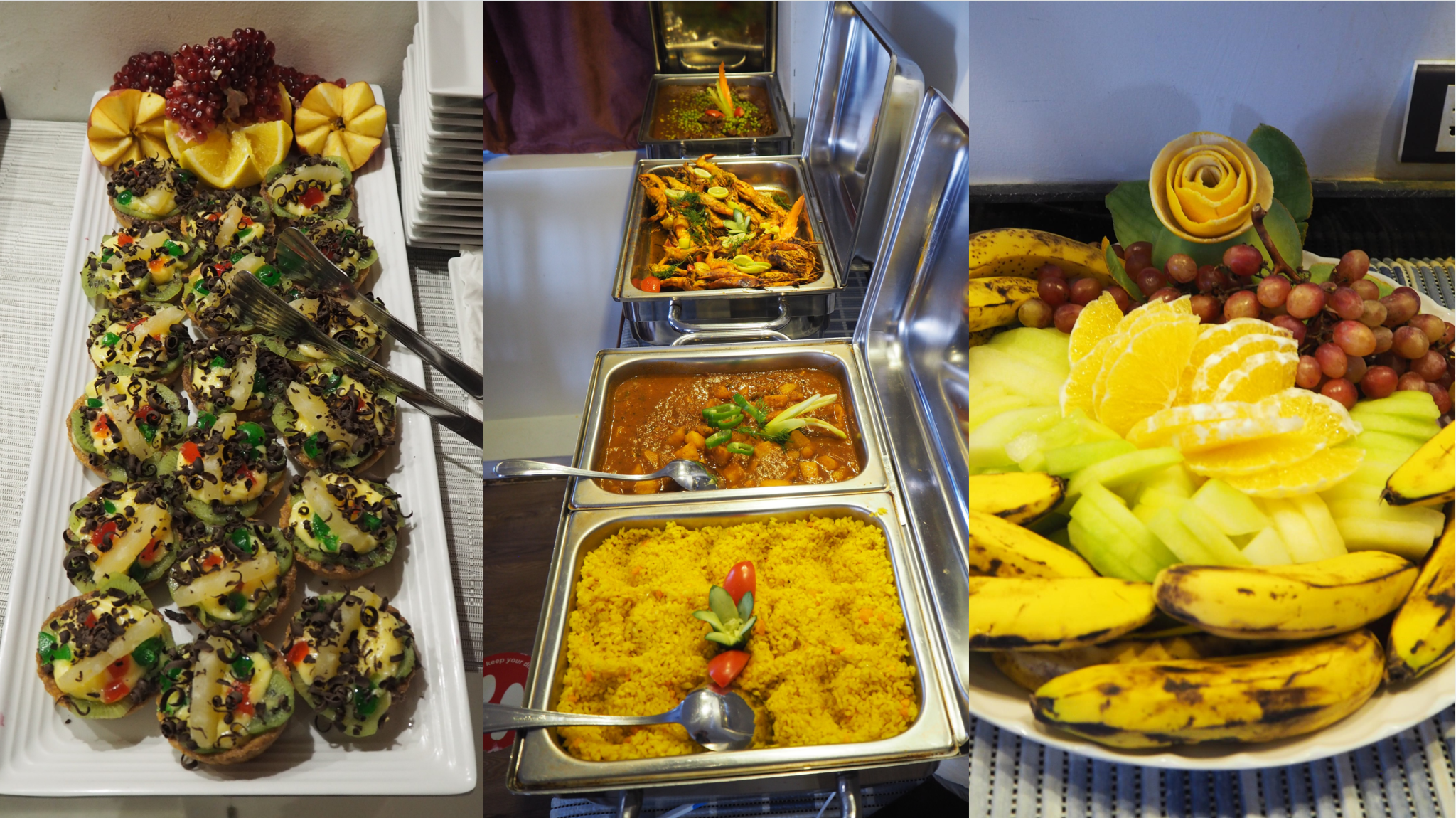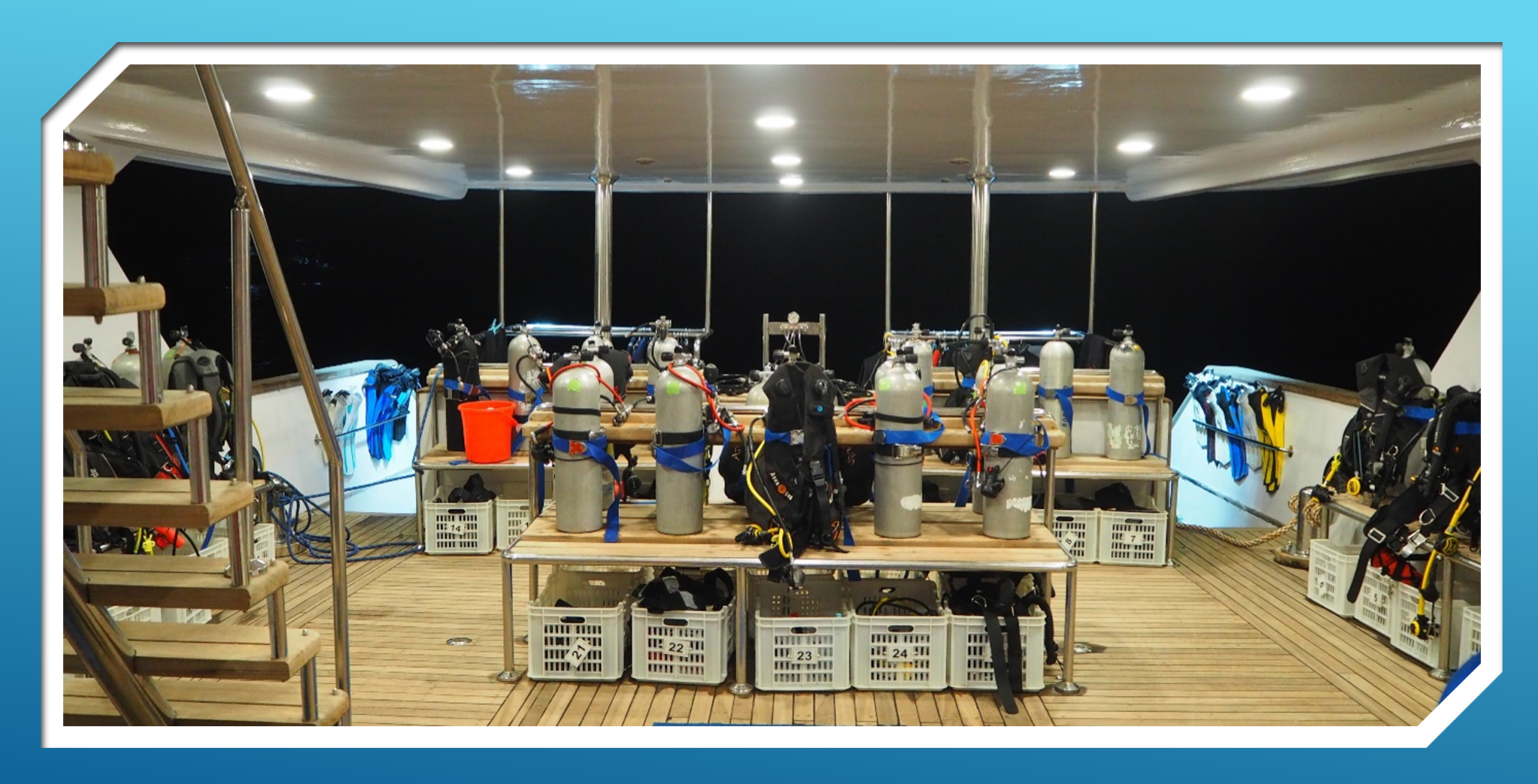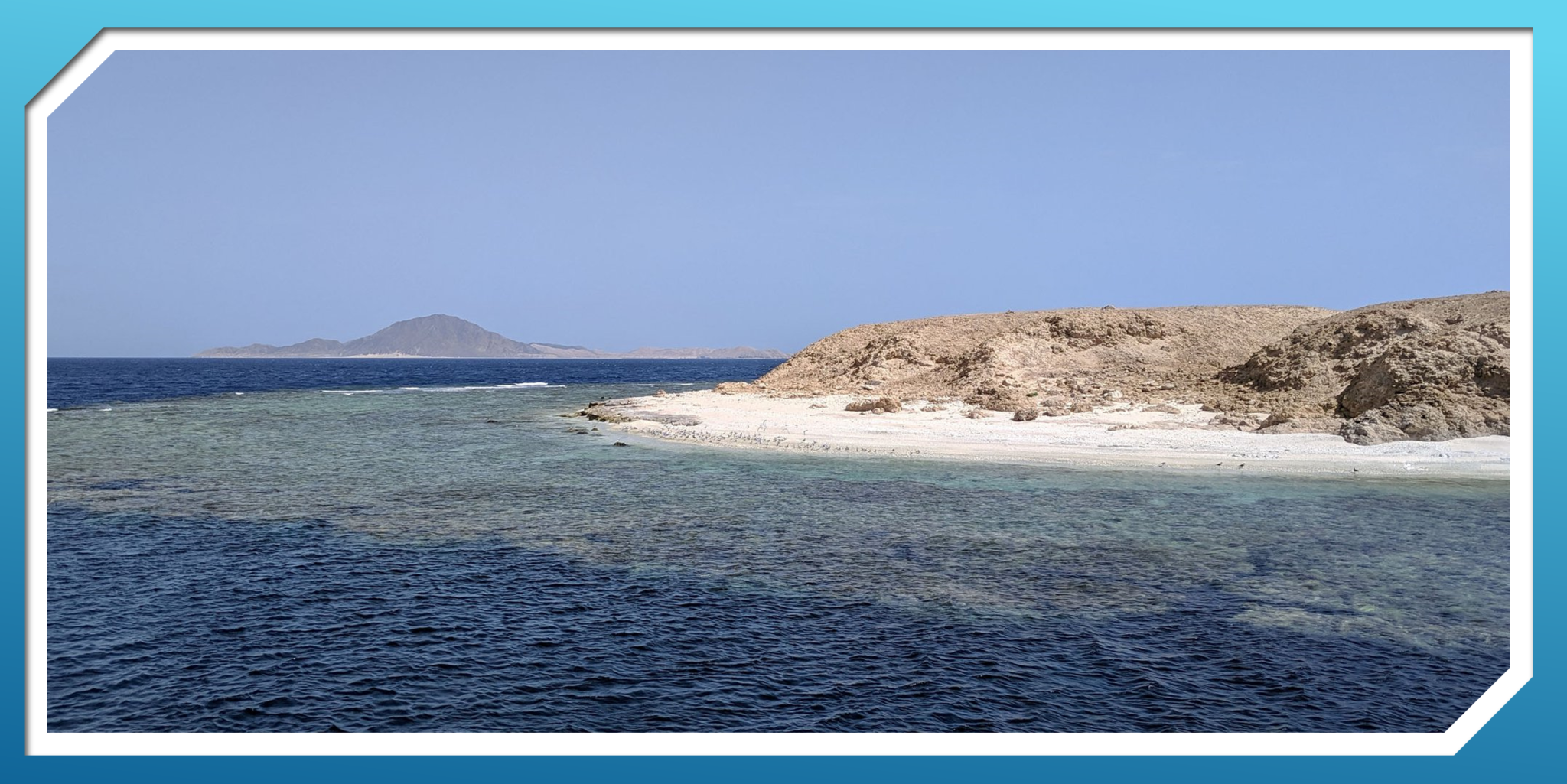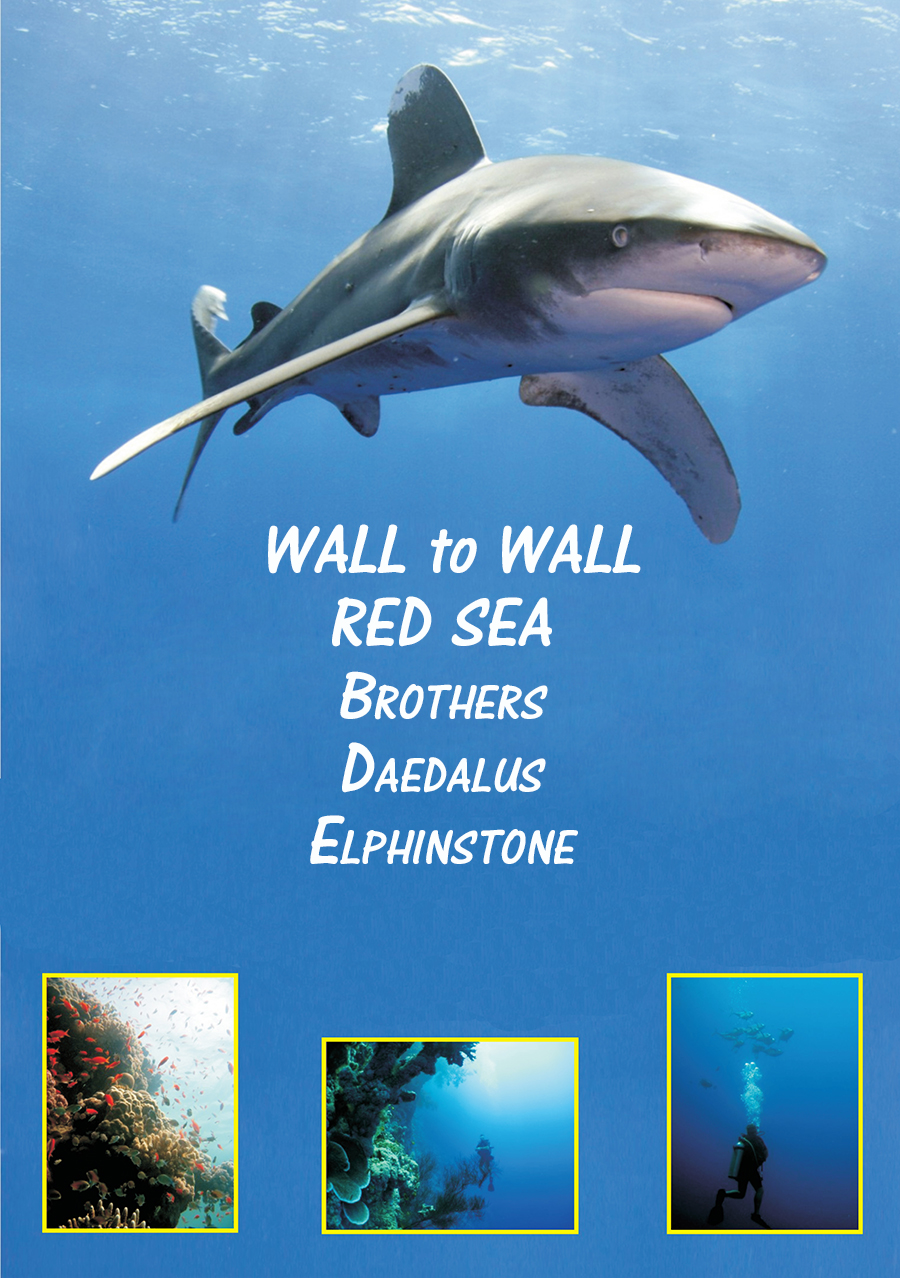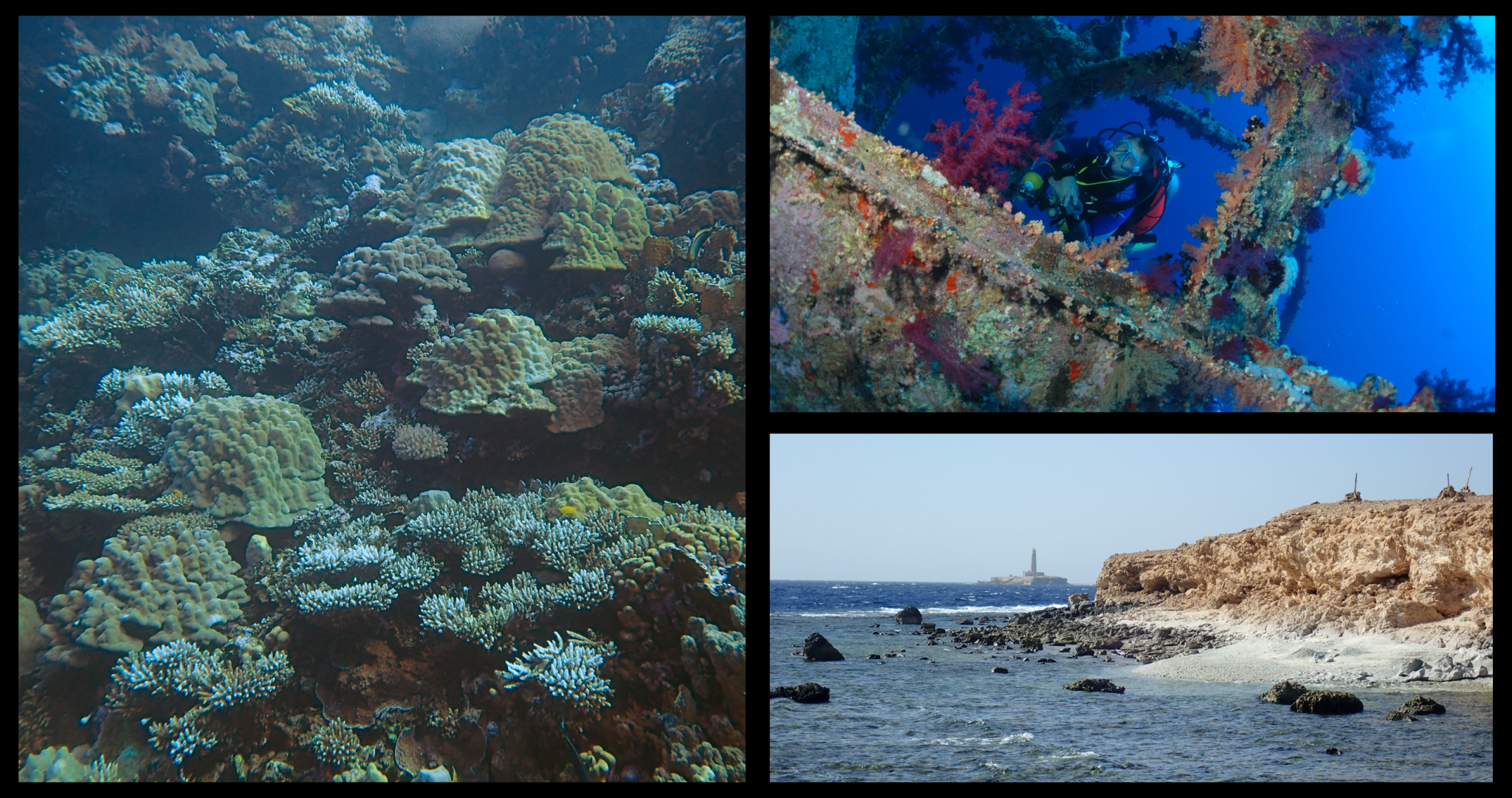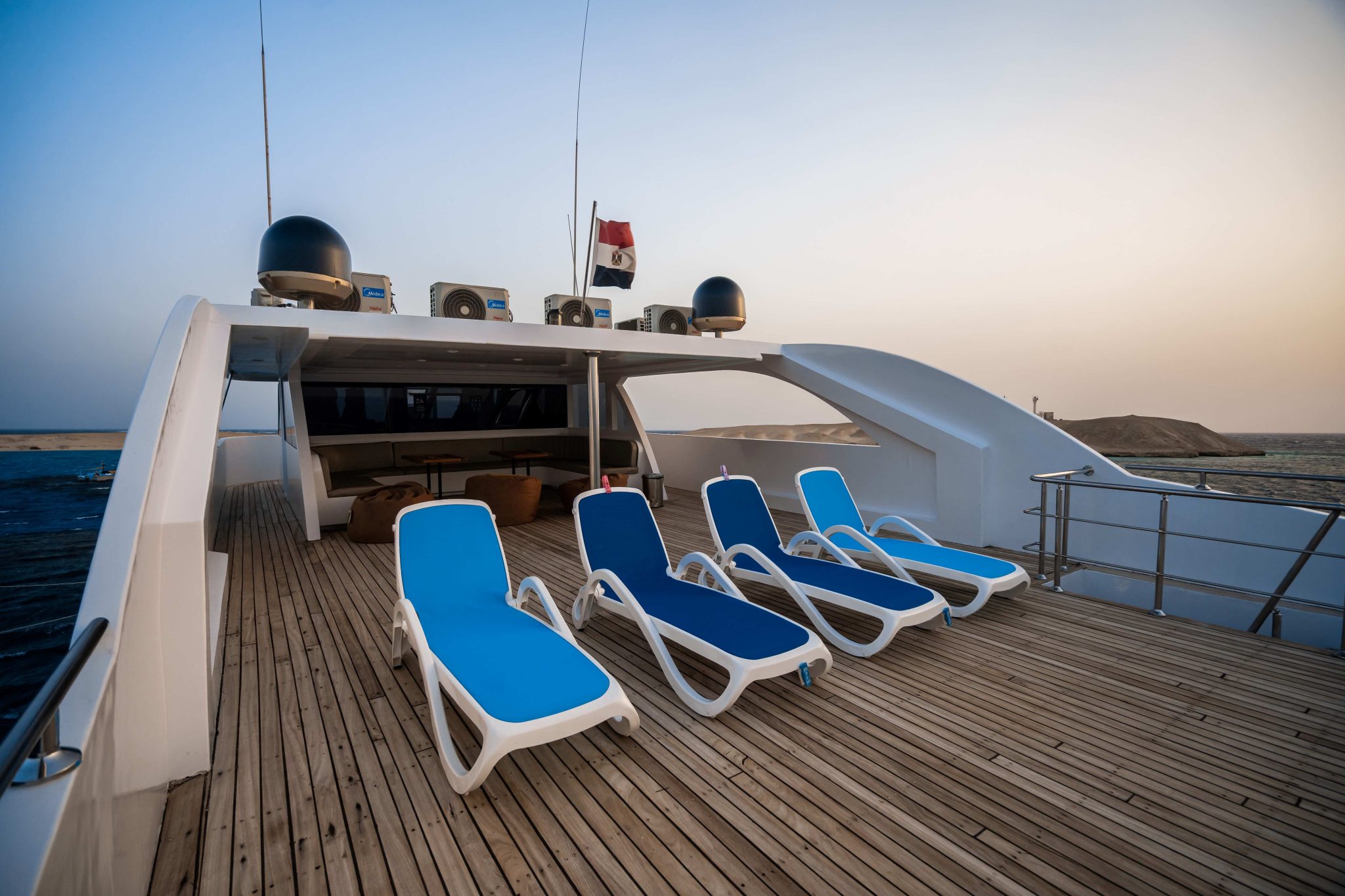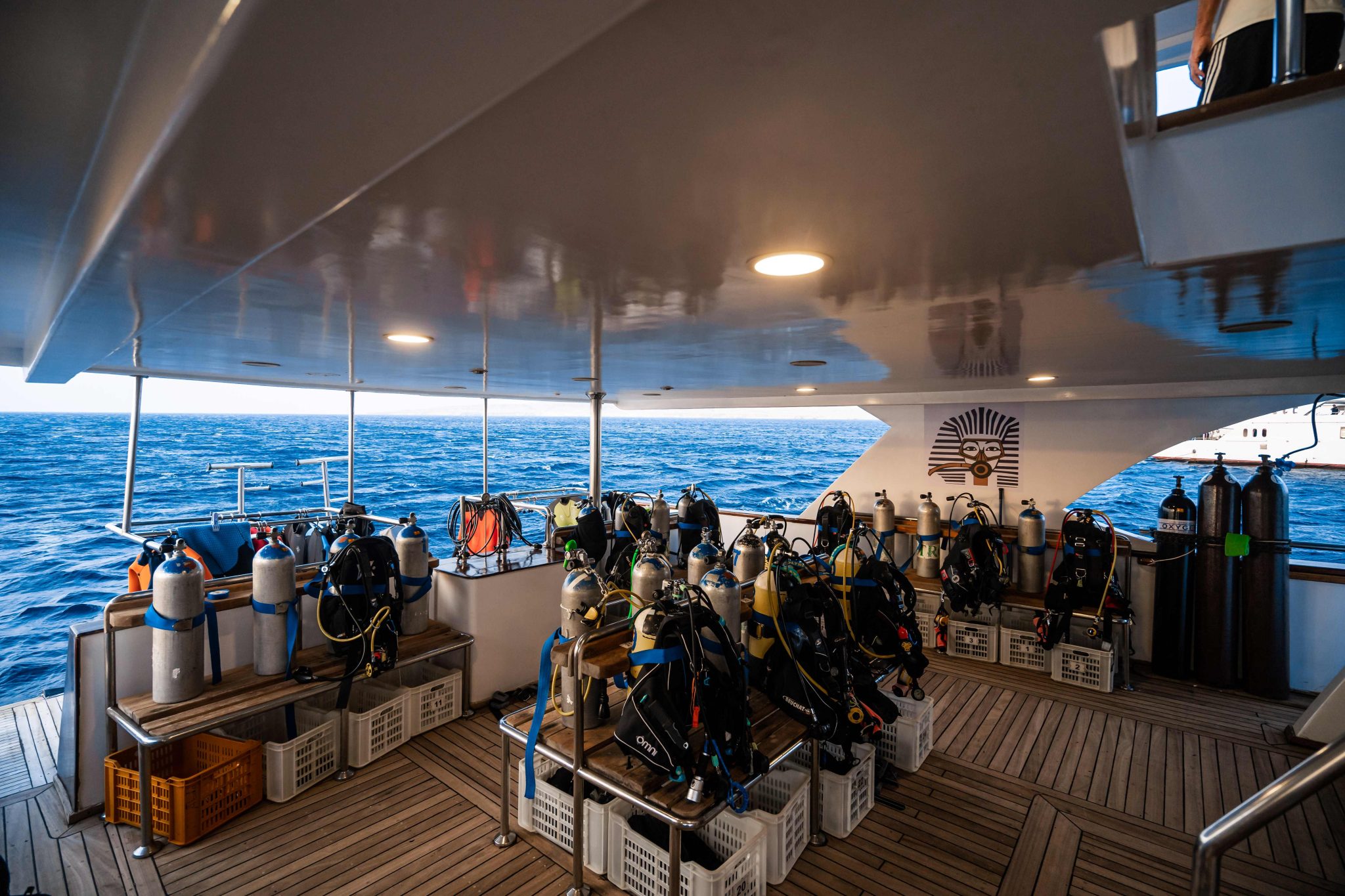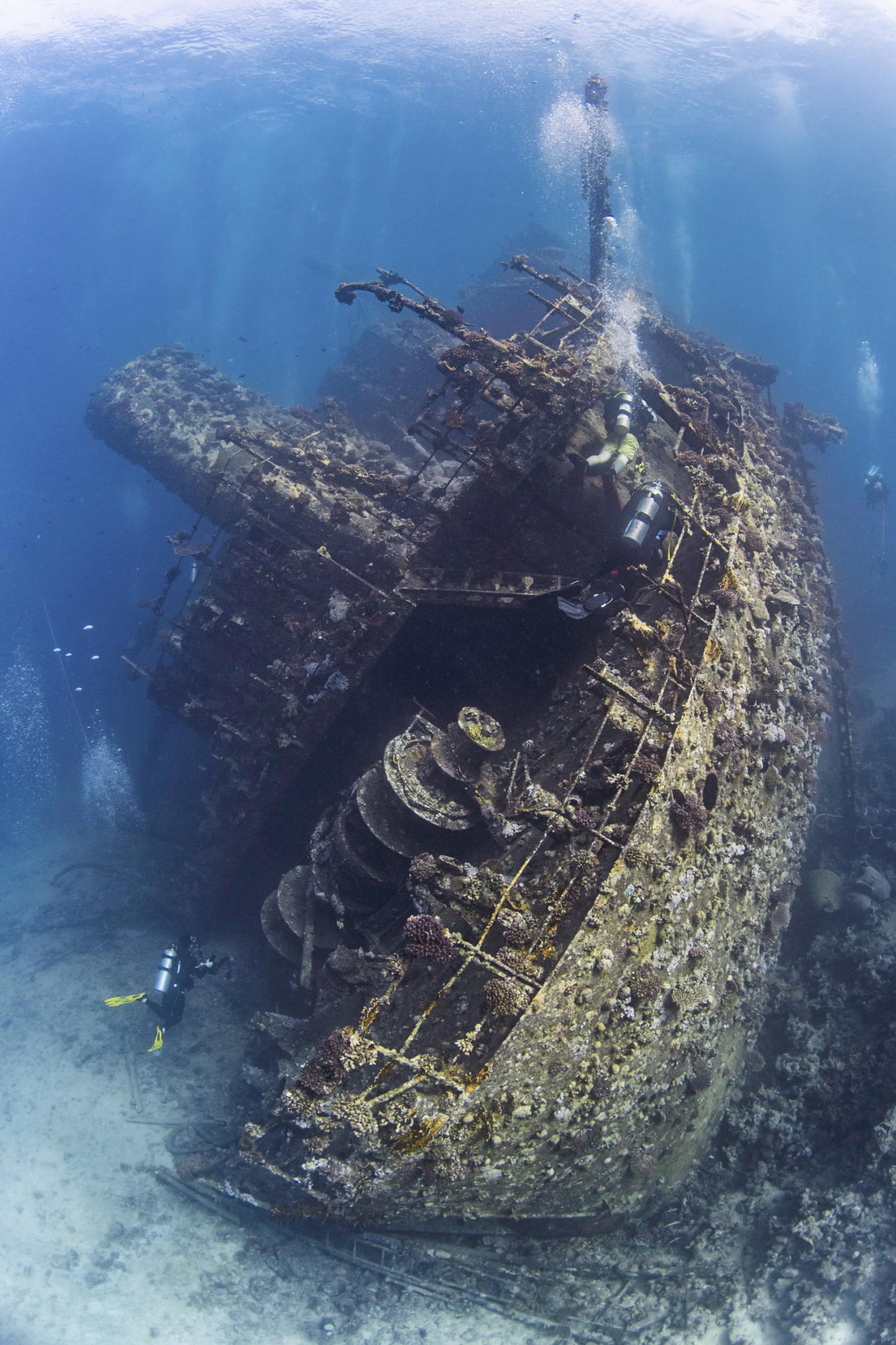Blogs
Red Sea Safaris – The Way They All Should Be!

Big Blue might seem like the new kid on the block, but the team behind the highly acclaimed Big Blue liveaboard is far from that. They have been running Red Sea safaris since the late 1980’s and were in fact part of the early pioneers who ventured out to the unknown on vessels that in today’s world, really shouldn’t have left the harbour! It’s that experience and the years of operating the award-winning Roots Red Sea resort which truly set Big Blue apart from the crowd… literally!
What liveaboard diving shouldn’t be but often is!
Diving with crowds. Some boats have 40 divers on board and there can quite often be dozens of boats at a dive site!
Rushing the divers in and out of the water to meet predetermined deadlines.
Following in a procession of inexperienced divers on sites they really aren’t prepared for.
Big Blue’s Unique Selling Point is, quite simply:
SPACE & TIME.
Book Now: info@mybigblue.com / www.mybigblue.com /
Space on Board
We have been operating and running safari boats for over 30 years, all of which was leant on when it came to designing the layout of Big Blue.
When you are spending a week on board a confined space with a group of divers, it’s great to have some areas to relax in peace and quiet away from the social areas. Big Blue has these in abundance.
A large lounge area, spacious sun deck and extensive terrace desk.
A large restaurant with 5 tables with up to 6 chairs per table.
A varied and delicious menu is on offer with special dietary requirements catered for (with advanced warning).
Spacious cabins all have side by side beds and a large walk in wet bathroom.
An ample dive deck for 24 divers, especially when the divers are split into groups.
Did you know Big Blue has two cabins suitable for wheelchairs?
Big Blue welcome all suitably qualified divers!
Book Now: info@mybigblue.com / www.mybigblue.com
Space at the Dive Sites
Our itineraries are fluid rather than a fixed plan. We will take in all the featured dive sites on the safari, however we won’t be sure when until we are sailing. We go where the weather is best, the other boats are fewest and the marine life is awesome.
Dive the best Red Sea dive sites with Big Blue, including:
Rocky Island & Zabargad
The Brothers
Elphinstone the Big Blue Way!
Space & Time Diving
Book Now: info@mybigblue.com / www.mybigblue.com
Dive with your buddy or dive with your group, guided or unguided, it’s up to you!
Why have all 24 divers jump in the water together? We work with groups of 6 with intervals between each group, so whether you’re off the boat or out by zodiacs, its always in a small group! Enjoy the marine life and topology – it’s not an equipment and bubble showroom!
Sometimes, we just can’t avoid other boats on certain sites, but that’s OK – without doubt the majority of these boats will dump their divers in to the same set schedule, so we just wait and enjoy the reef or wreck to ourselves later.
Small and spaced-out groups avoid situations like mass safety stops on the drop line or all divers trying to get in the pickup boats at the same time. Small groups mean safer and more enjoyable diving is had by all!
The Boat
Book Now: info@mybigblue.com / www.mybigblue.com
We are great believers that safaris are about the diving, not the boat. However, clearly there is an optimum standard to maintain in order to ensure the comfort of the guests, and Big Blue delivers: the vessel is purpose built to be very spacious, comfortable and functional for remote diving.
We don’t have an onboard jacuzzi, tv’s in the rooms or other such luxuries, because for us, it’s all about the diving, and we know that’s what it’s all about for you too. We have what you need to have an amazing dive safari with an incredibly attentive crew making it all tick seamlessly.
Your safety is everyone’s priority, whether you are relaxing on board or diving.
Big Blue is fitted with smoke alarms, emergency lighting and a fire alarm system. The lower corridor has a full-size door fire exit at the bow and open stairs to the stern. There are evacuation plans in each room along with life jackets, glass breaker tool and a fire extinguisher.
Where do we go?
Anywhere and everywhere!
We primarily charter Big Blue to groups and discuss with them what they want to do and see. We offer the benefit of 35 years of exploration of the Red Sea by safari and provide ideas as to the best potential itinerary for that group. If the route is viable and safe, we are good to go!
We have our set outlines to provide some pointers, but no two weeks are ever the same!
Itineraries
For full details of Big Blue’s Ultimate Wreck itinerary, click here.
For full details of Big Blue’s Ultimate Brothers itinerary, click here.
For full details of Big Blue’s Pelagic Encounter itinerary, click here.
For full details of Big Blue’s Pelagic Encounter itinerary, click here.
One of our bespoke SOUTHERN EXPLORER trips from last month:
Your home for the week: Big Blue (Watch Video)
Big Blue’s 2024 Schedule
Big Blue’s schedule for 2024 has just been released! Take a look at the schedule and let us know what trip you are interested in, even if it says its full. The boat is often chartered but may have some spaces available which we can release to you, so always ask 😊
View Big Blue’s 2024 Schedule here: www.mybigblue.com/schedule
View Big Blue’s 2024 Rates here: www.mybigblue.com/rates
Book Now: info@mybigblue.com
Steve & Clare Hosted Safaris
In 2024, Big Blue owners Steve & Clare will be hosting 3 safaris on Big Blue. If you are interested in joining, let them know as soon as possible and they will send full details.
21/9/24 – Northern Highlights, the Brothers and Safaga
Completely random itinerary taking in several wrecks including Numidia, Salem Express, & a choice at Abu Nuhas, along with spectacular reefs along the way.
Sails from and returns to Hurghada
Prices from £1085 per person sharing a standard cabin
Excludes the government fees paid onboard, expected to be €175 per person
Book Now: info@mybigblue.com
12/10/24 – North Wrecks (hopefully the fabulous Turkia)
No, we don’t mean the typical armada of dive boats racing around the set route together. Ideally we will be heading up the Gulf of Suez as far as Zafrana; however, that’s very weather dependent so we need the right window to get north. Even if we don’t make it to Zafrana, we will still be diving the wrecks off the beaten track – The Million Hope and Thor Guardian, among others. Ask for full details.
Sails from and returns to Hurghada
Prices from £1,175 per person sharing a standard cabin
*If we don’t make Zafrana and the Turkia there will be a €100 refund on the cost.
Excludes the government fees paid onboard, expected to be €100 per person.
Book Now: info@mybigblue.com
30/11/24 – South Explorer: annual end of season jaunt
As the title says, we go south and just explore. It’s our annual pilgrimage for regular guests and friends. We have our regular favourites that we could dive all day everyday and still want more, and they are interspersed with exploration and trying new sites. This year we didn’t see another boat for four days! It was just like the early pioneering days – absolutely fabulous.
There will be a few spots open as most of the group rebook instantly, so if you want to have an awesome adventure, don’t delay and get in contact asap.
Sails from and returns to Port Ghaleb
Prices from £1,025 per person sharing a standard cabin
Excludes the government fees paid onboard, expected to be €175 per person
Book Now: info@mybigblue.com
What our guests say!
They hadn’t even got off the boat and sent this post and rebooked for 2024!
Book your next Red Sea Liveaboard Adventure with Big Blue Now!
Book Now: info@mybigblue.com / www.mybigblue.com / 00447958329059/00201065540888
Blogs
Alonissos: The complete diving destination (Part 1)

In June we were incredibly fortunate to be invited to dive in Alonissos, a small Greek Island in the Sporades island chain located in the North Aegean Sea. While I have long been a big fan of the Greek Islands as a great holiday destination, I had not had the opportunity to do any diving on previous visits and Mike and I were extremely excited to see what Alonissos had to offer both above and below the surface!

The Sporades are easily accessible via the airport in Skiathos (the first island in the chain), which is served by Jet2 flights from all major UK airports from May through October. Numerous ferries and charter boats make island hopping from Skiathos Town a breeze. After an hour boat ride, the picturesque port of Patitiri was a wonderful introduction to Alonissos, where we were met by our gracious hosts Kostas of Albedo Travel and Dias of Alonissos Triton Dive Center. Mike and I were delighted to be staying at the Paradise Hotel, aptly named for its stunning views over the sea and great location for walking to the waterfront.

Alonissos is beautifully situated in the National Marine Park of Alonissos and the Northern Sporades, the largest marine protected area in Europe. The surrounding seas offer fabulous marine life, including incredibly rare species such as the Mediterranean monk seal. They boast deep walls covered in gorgonians and sponges, stunning topography with caverns, swimthroughs and pinnacles, and the first accessible ancient shipwreck from 500BC!

In locations where historical sites have been reported, the waters are largely restricted, but with collaboration between government, underwater archeologists and dive centres, incredible underwater museums are being created for a truly unique diving experience. Alonissos is home to the first of these, the Ancient Shipwreck of Peristera Accessible Underwater Archeological Site. The chance to dive into history (along with reports of healthy reef life and amazing underwater topography) meant Mike and I were keen to get in the water.

Our introduction to the diving around Alonissos was at the Agios Georgios Pinnacles, in the channel between Alonissos and Skopelos. This fantastic site was named “The Chimney,’ and proved to have a huge amount to see. We got to a decent depth here (over 25m), and marvelled at a colourful reef wall with a wonderful swim through whose rocky walls were absolutely covered with life. As well as brilliant topography there was no shortage of macro life here. We saw numerous nudibranchs, five different species in total. The second dive at Mourtias reef nearby was a shallower dive along a nice wall with lots of crevices. Several moray eels and grouper called this site home. We enjoyed looking in the crevices for lobster and smaller benthic life, such as cup corals and tunicates.

Our itinerary allowed us two dives a day with afternoons left to explore the island with our hire car and evenings to enjoy the famous Greek hospitality. This proved to be a lovely mix of in-water and land based diversions.

The next days diving to the Gorgonian Gardens and Triton’s Cave was to be even better! These two stunning sites are nothing short of fabulous. The Gorgonian Gardens was a deep wall near to the Agios Georgios islands. The ever-present currents in this deep channel meant that the sea life was amazing … the namesake Gorgonian sea fans dotted the wall at a depth of 30 to 50 meters, getting ever larger the deeper we went. Above 30m was by no means less beautiful, with sponges, corals, scorpionfish, moray eels and some rare and colourful nudibranchs.

The second shallower dive of the day was to Triton’s Cave or the Cavern of Skopelos, on the east side of that island. The spectacular rock formations had wild striations both above and below the water making a truly epic topography. The cavern entrance was at 14m, and big enough for a buddy pair, winding up to 6m and passing two beautiful windows out into the blue. Emerging from the cavern, the light at the shallower depths and the incredible rock formations made for a fantastic gentle swimming safety stop and we all surfaced by the boat with massive grins.

Check out our next blog :Alonissos: The complete diving destination (Part 2)” to hear about our amazing dive on the 2500 year old Peristera Wreck!
Thanks to:
Alonissos Triton Dive Center https://bestdivingingreece.com/
Albedo Travel https://alonissosholidays.com/activities/
Paradise Hotel https://paradise-hotel.gr/
Alonissos Municipality https://alonissos.gr/en/
Blogs
Mamma Mia! Diving Skopelos (Part 2)

Our second days dive itinerary was to the famous Christoforos wreck! This is arguably the best dive in Skopelos and though only open to divers with deep diving experience, this 83m long wreck is well worth the visit.
The Christoforos sits in 43 meters of water with the deck at 32 to 35 meters. A 30m dive can give an impressive view of the wreck, though such a large wreck needs a few dives to truly do it justice. Given its ideal location just a 2 minute boat ride from the dive centre dock it is an excellent first dive of the day. The sheltered site is also diveable in all but the absolute worst weather so although deep, the water is usually clear with little to no current making it a very pleasant dive. The site is superb for technical diving and a great training site for the Tec 40 and 45 programs, offered by Skopelos Dive Center.

The Christoforos wreck was originally a collier ship built in 1950 at Grangemouth shipyard under the name “Thomas Hardie”. In 1976 she joined the Greek merchant fleet as “Christoforos”. On the 2nd of October 1983 the Christoforos was carrying 2600 tonnes of cement from Volos to Piraeus Port. During the voyage the weather turned, resulting in the ship developing a 7 degree list, whereby she changed course for safe anchorage at Panormos, Skopelos. The ship reached Panormos at 16:00 with a list of 17 degrees and water ingress to No. 1 hull. Though attempts were made to right the vessel, the crew were ordered to abandon ship at 22:00. The captain, lieutenant and the quartermaster remained to try and save the ship, but had to abandon the attempt themselves and the Christoforos finally sank at 05:30 on 3rd October 1983. She now sits upright in 43 meters of water less than 200m from shore in Panormos.

Diving has only been allowed here since 2018, so the wreck is very well preserved and a real treat to dive. Permission to dive here was granted by the authorities after lots of incredibly hard work by the Skopelos Dive Center staff. Having a fantastic wreck in such an amazing location and in excellent condition is a real privilege.

Of all the sites in Skopelos this was the site Mike and I were most keen to experience. Having kitted up and zipped across the bay to the mooring, we left the surface and followed the descent line until the wreck emerged spectacularly from the blue at 15m. She is a big and beautiful wreck, sitting as though calmly continuing her journey along the seabed. With most of her original features still intact there were points of interest everywhere, including the anchors, winches, ships telegraphs, the wheel and RDF antenna.

We found that aquatic life had colonised the ship, with schools of fish, electric blue nudibranchs, a large moray eel and the resident scorpionfish lurking inside the bridge. The Christoforos was truly a stunning wreck and despite maximising our time at depth we eventually had to say our goodbyes and begin the slow and steady return to the surface.

After a superb morning dive we had the afternoon to do a little sightseeing of the island, with a trip to the church of Agios Ioannis Kastri made famous by the blockbuster movie “Mamma Mia!”. Mike and I spent a happy afternoon pootling around in our little hire car before meeting up with Lina from Skopelos Dive Center. An underwater archeologist as well as a dive professional, Lina had offered to show us a rather special attraction, the Christoforos shipwreck Digital Spot public information and awareness centre.

A fantastic initiative made possible from the collaboration of the government and hard work of the staff at Skopelos Dive Center is the “Digital Spot” in Agnontas port. This information center has a number of displays on the history of the Christoforos wreck, the process by which the wreck was allowed to be opened to the public for diving tourism, other sites of historical interest in the area, a video of the wreck and the best bit, a virtual reality dry dive experience! The beauty of the VR system is that non diving members of the family can see what you have seen on the wreck, or you can see areas that you may not have explored during the dive due to time or depth limitations. It was a truly immersive experience and a great addition to the dive itself.

After a wonderful day we celebrated our last evening on the island with an exquisite meal in Skopelos Town with fabulous views over the town and bay, washed down with the excellent local wine. The lamb with lemon and potatoes was a meal which I could happily eat every day for the rest of my life!

Skopelos is an island that truly has it all. The diving is excellent, the landscape is beautiful with plenty of non diving activities, the locals friendly and the food and drink superb. Given how accessible it is as a holiday destination it has avoided becoming overcrowded and even in peak season offers a fun yet relaxing atmosphere. We highly recommend giving Skopelos a visit. We will certainly be back again!
Thanks to:
Municipality of Skopelos (https://skopelos.com/)
Skopelos Dive Center (https://sporadesdiving.gr/)
Ionia Hotel (https://www.ioniahotel.gr/en)
Dolphin of Skopelos (https://dolphinofskopelos.com/)
Ta Kymata restaurant (@takymata)
The Muses restaurant (https://www.facebook.com/TheMussesMousses/)
Aktaiov resturant (https://skopelos.com/listings/aktaion-taverna/)
-

 Blogs2 months ago
Blogs2 months agoDiving With… Nico, Ocean Earth Travels, Indonesia
-

 News1 month ago
News1 month agoMurex Bangka Announce New Oceanfront Cottages & Beachfront Dining
-

 Blogs2 months ago
Blogs2 months agoA new idea in freediving from RAID
-

 Marine Life & Conservation1 month ago
Marine Life & Conservation1 month agoIceland issue millionaire whale hunter a licence to murder 128 vulnerable fin whales
-

 Marine Life & Conservation2 months ago
Marine Life & Conservation2 months agoThe Shark Trust Great Shark Snapshot is back
-

 News3 months ago
News3 months agoCharting New Waters; NovoScuba Goes Global with the Launch of their Revolutionary Dive Training Agency!
-

 Gear News1 month ago
Gear News1 month agoNew Suunto Ocean – a dive computer and GPS sports watch in one for adventures below and above the surface
-

 Marine Life & Conservation Blogs2 months ago
Marine Life & Conservation Blogs2 months agoBook Review: Plankton



